Journal of Daylighting
Journal of Daylighting is a peer-reviewed international journal devoted to investigations of daylighting in buildings. It is the leading journal that publishes original research on all aspects of Energy, buildings, and lighting. Read more
Indexed: ESCI (Web of Science), Scopus, DOAJ, EBSCO, and other databases
Open Access — free for readers, articles are published free-of-cost.
Rapid Publication: Bi-annual (articles are published continuously throughout the year)
Publication Fee: No charges
Year Started: 2014
Time to Publication: 70 days
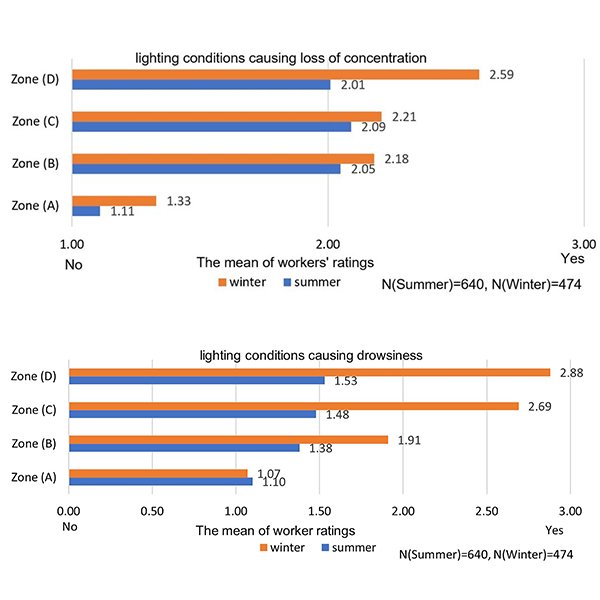
RESEARCH ARTICLE
Evaluating the Impact of Lighting Conditions on Workers’ Safety and
Lighting is a key element of design that plays a significant role in affecting workers’ health and safety in industrial workspaces. Given the scarcity of scientific studies addressing visual environments in relation to workers health in industrial buildings, this field study was conducted to explore workers' responses to multiple lighting scenarios inside production halls on their occupational health and safety in six factories in Sadat City, Egypt. .
Journal of Daylighting 12 (2025) 420-440
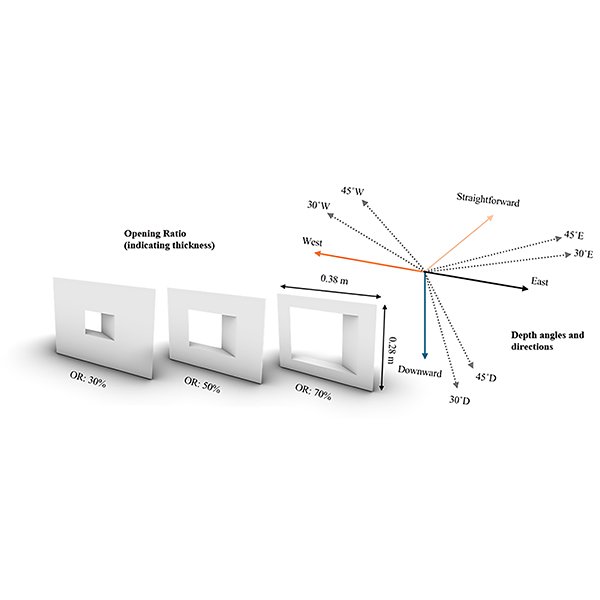
RESEARCH ARTICLE
Evaluating Daylighting Performance of Parametric Mashrabiya in Mediterranean Climate: A
This study examines the daylighting performance of parametric Mashrabiya-inspired shading devices in a Mediterranean climate, aiming to enhance occupant comfort and visual performance.
Journal of Daylighting 12 (2025) 397-419
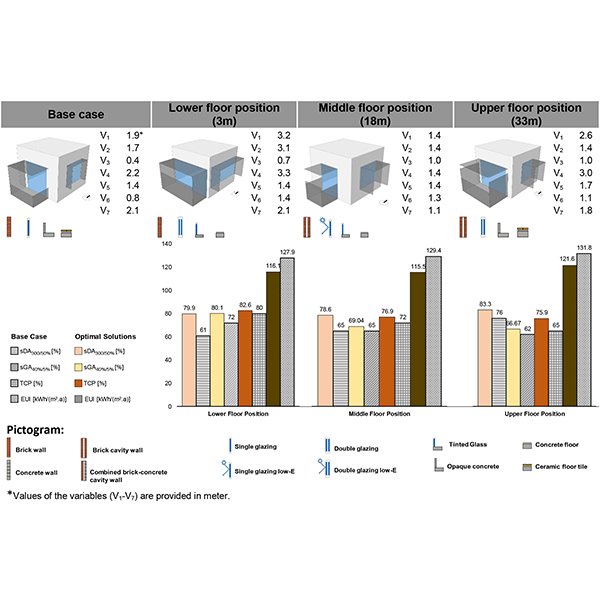
RESEARCH ARTICLE
Height-Responsive Balcony-Integrated Envelope Design for High-Rise Residential
Balconies function as essential shading elements within the building envelope, playing a critical role in regulating occupant comfort and energy efficiency.
Journal of Daylighting 12 (2025) 375-396
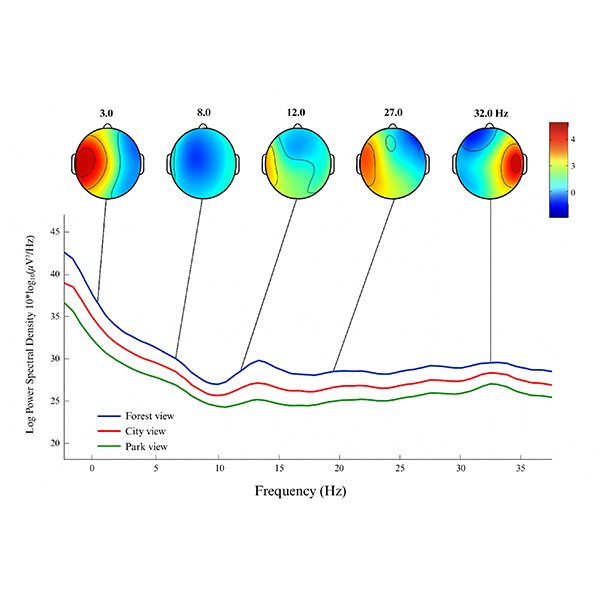
RESEARCH ARTICLE
EEG-Based Neurophysiological Responses to Classroom Window Views in Green
This study examines the neurophysiological responses of students to different classroom window views - forest, park, and city - within energy-efficient, green campus environments.
Journal of Daylighting 12 (2025) 359-374
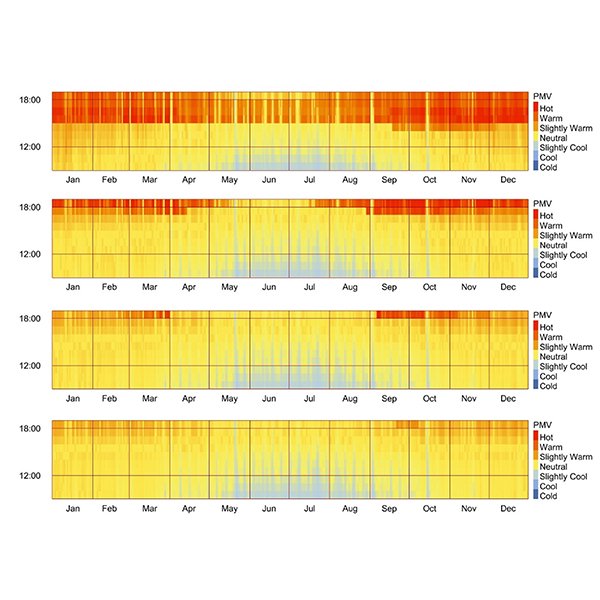
RESEARCH ARTICLE
Enhancing Year-Round Thermal Comfort with Solar Control Films: A
Windows significantly contribute to thermal discomfort in high solar irradiance climates by allowing excessive heat gains and uneven indoor temperatures.
Journal of Daylighting 12 (2025) 343-358
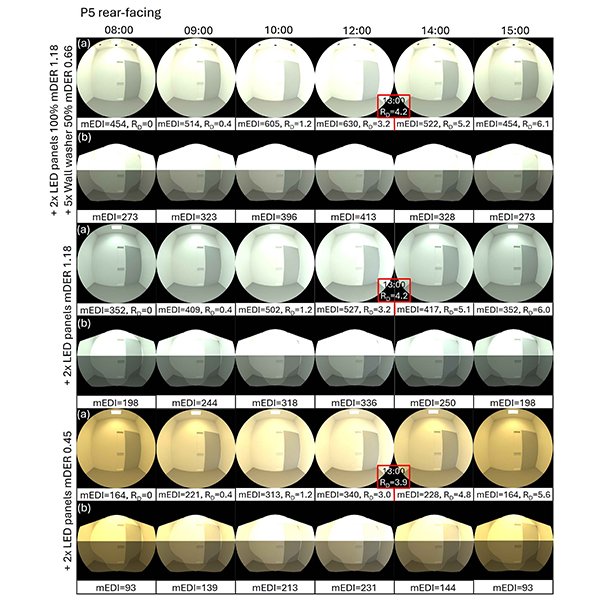
RESEARCH ARTICLE
Evaluating Visual and Beyond-Vision Light Effects and Energy Consumption
Light influences human physiology and psychology through visual and beyond-visual effects, collectively termed ‘integrative lighting.’ Human responses depend on luminous (quantity, spectrum, directionality) and temporal (timing, duration, history) factors, yet no studies examined their combined influence on integrative lighting. Th.
Journal of Daylighting 12 (2025) 306-342
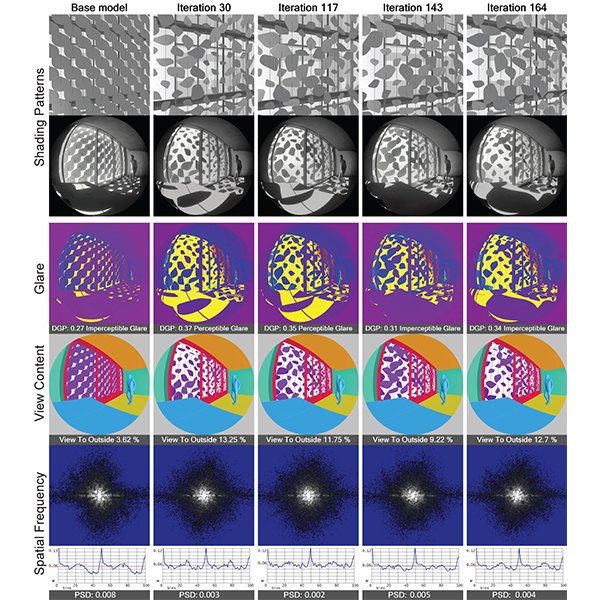
RESEARCH ARTICLE
Occupant-Centric Visual Comfort Assessment and Optimization of Passive Solar
This study introduces a comprehensive computational framework integrating image-based simulations, spatial frequency analysis, and multi-objective optimization to evaluate and optimize passive solar shading devices from an occupant-centric perspective.
Journal of Daylighting 12 (2025) 293-305
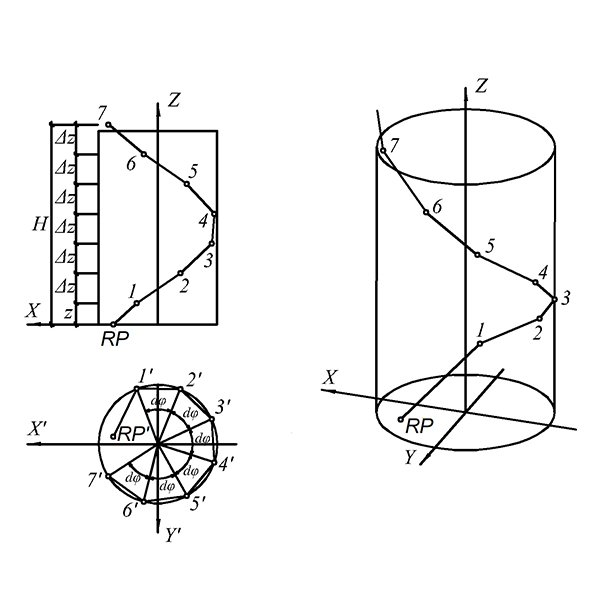
RESEARCH ARTICLE
Determination of Efficiency of the Vertical Specularly Reflecting Cylindrical Light
Article is devoted to determination of efficiency of the vertical specularly reflecting cylindrical light shaft for various types of the firmaments standardized by CIE (International Commission on Illumination).
Journal of Daylighting 12 (2025) 278-292
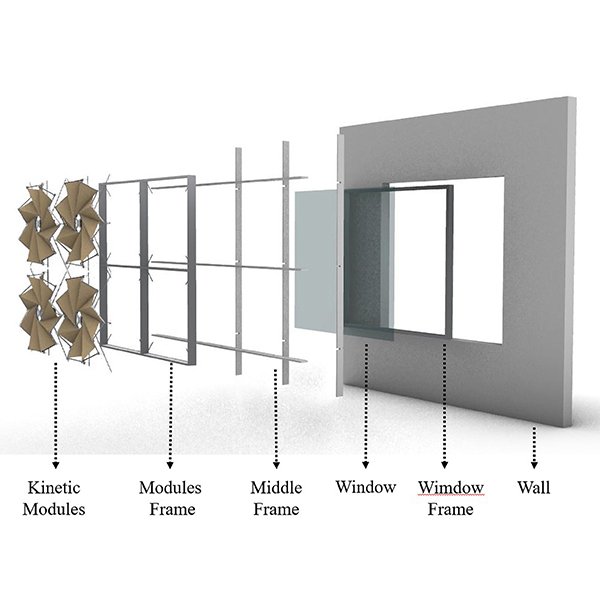
RESEARCH ARTICLE
Designing a Kinetic Façade to Control Glare: Inspiration of
In this study, to control glare in buildings with glass facades, a kinetic facade was designed using a pattern inspired by nature. Accordingly, in this study, due to the essential similarity of buildings with plants regarding the inability to move and location, in the first step, plants and their morphology were examined.
Journal of Daylighting 12 (2025) 265-277

RESEARCH ARTICLE
Tessellation-Based Origami-Inspired Movable Façade for Daylighting and
This study emphasizes the importance of daylight performance in interior spaces as a critical factor in achieving global Sustainable Development Goals, including energy efficiency, environmental sustainability, and healthy living conditions.
Journal of Daylighting 12 (2025) 252-264

RESEARCH ARTICLE
Sensitivity Analysis and Optimization of Facade Design to Improve Daylight
This study examines the daylighting performance of a classroom with bilateral opening typology and an adjacent building on one side. The openings are located on the east and west sides of the classroom, with the adjacent building situated on the west side.
Journal of Daylighting 12 (2025) 235-251

RESEARCH ARTICLE
Integrating Acoustic Comfort and Daylighting in Transparent Multi-Purpose Halls:
Multi-purpose halls are halls where many different activities, such as music, theater, speech, and shows, can be performed in the same space. Recently, multi-purpose halls illuminated with daylight have been frequently seen.
Journal of Daylighting 12 (2025) 215-234

RESEARCH ARTICLE
Assessing the Indoor Thermal Comfort and Adaptive Behaviours of Older
Population aging, extreme weather conditions, and rising energy costs present significant challenges, especially in developing Asian countries like India.
Journal of Daylighting 12 (2025) 190-214

RESEARCH ARTICLE
Balancing the Parameters of Perforated Solar Screens to Optimize Daylight
Perforated solar screens (PSSs) have been widely used as an outer skin for the fully glazed façades of office buildings for their environmental and aesthetic benefits..
Journal of Daylighting 12 (2025) 167-189

RESEARCH ARTICLE
A Framework for Integrating Zoning Regulations and Site Layout Design
Daylight is one of the primary sources to ensure a comfortable, healthy, and energy-efficient neighborhoods. Zoning regulations significantly influence daylight-driven site layouts by constraining design decisions, particularly at the neighborhood scale.
Journal of Daylighting 12 (2025) 148-166
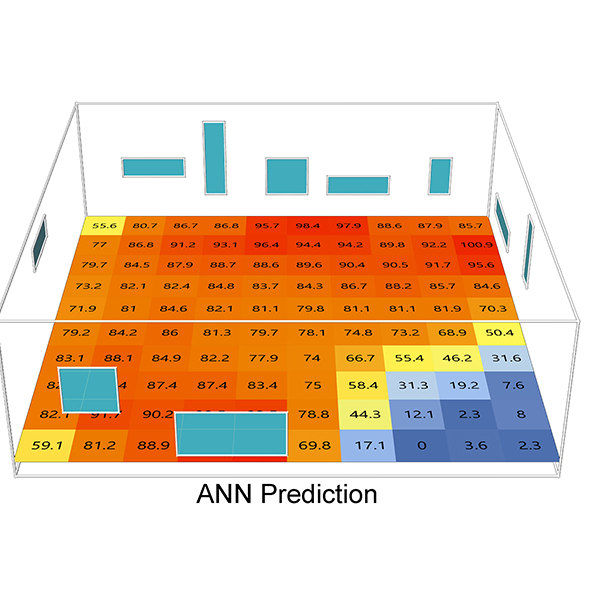
RESEARCH ARTICLE
Unfolding 3D Space into Binary Images for Daylight Simulation via
Daylighting plays a crucial role in building science, impacting both occupants’ well-being and energy consumption in buildings. Balancing the size of openings with energy efficiency has long been a challenge. .
Journal of Daylighting 10 (2023) 204-2013
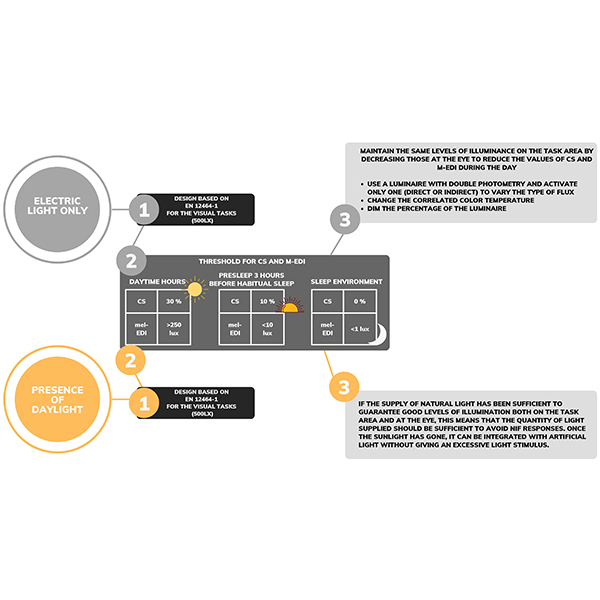
RESEARCH ARTICLE
Integrative Lighting Design: How to Optimize Visual and Non-visual
The objective of this paper is to outline fundamental principles for the electric lighting design of workplace environments such as offices. The study considers both the suggested guidelines and values for non-visual light design and the specifications for visual tasks dictated by the EN 12464-1:2021.
Journal of Daylighting 10 (2023) 192-203
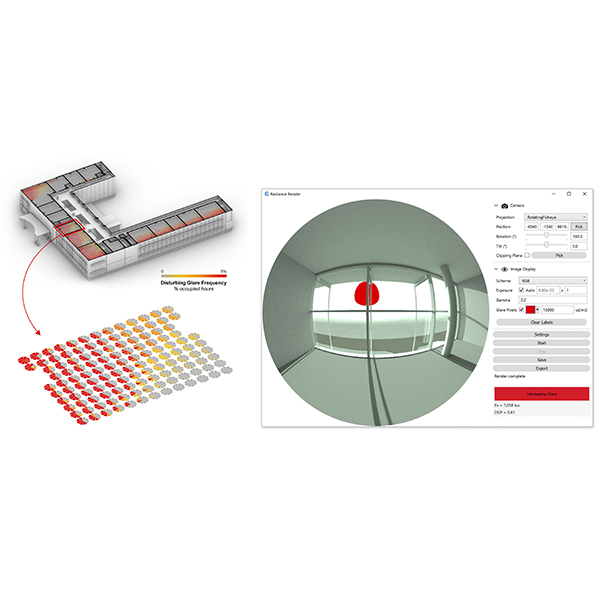
RESEARCH ARTICLE
The Effect of Parametric Patterned Façade Variations on Daylight
Parametric design influences on building envelope design are exponentially increasing in the current era due to the dominance of computational design on architectural outcomes.
Journal of Daylighting 10 (2023) 173-191
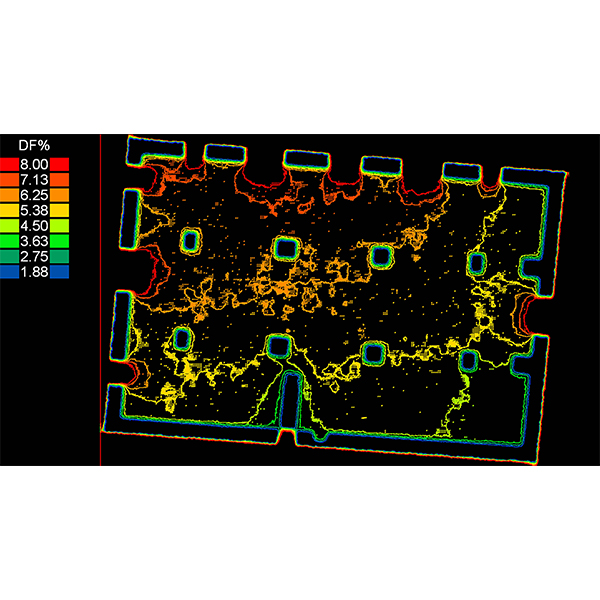
RESEARCH ARTICLE
Analysing the Daylighting Performance of the Main Prayer-hall in
This paper studies the daylighting quality of the indoor prayer-hall in The Great Upper Mosque of Hama city in Syria, highlighting this distinctive historical converted building that has been functioning as a mosque since the entry of Islam in the 6th century AD.
Journal of Daylighting 10 (2023) 153-172
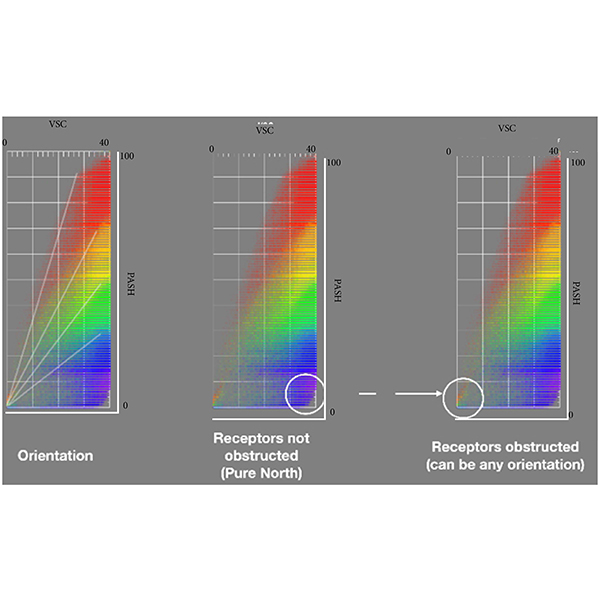
RESEARCH ARTICLE
Sunlight-Daylight Signature: a Novel Concept to Assess Sunlight and
Daylighting and solar availability at urban scale has come to play a crucial role in the perception of discomfort conditions for people, both in outdoor and indoor spaces, and on the energy consumption of buildings.
Journal of Daylighting 10 (2023) 136-152
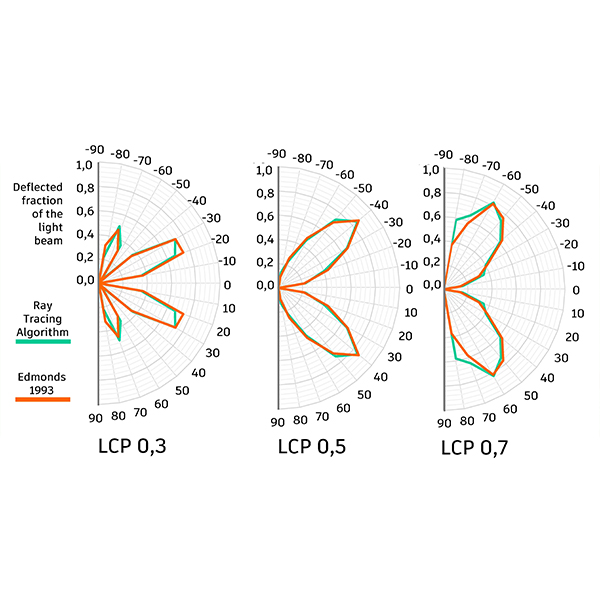
RESEARCH ARTICLE
Ray Tracing Algorithm to Simulate Laser-Cut Panel Light-Redirecting
Daylighting simulation software is an important tool to improve the quality of building design and to improve the quality of the built environment. For its application to correspond to reality, its algorithm needs to reflect real behaviour in the best possible way.
Journal of Daylighting 10 (2023) 87-98
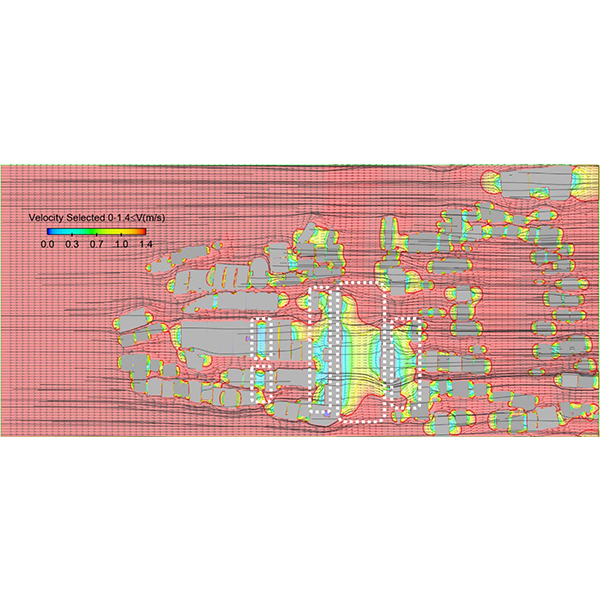
RESEARCH ARTICLE
The Effects of Orientation and Width of Space Between Buildings
Excessive heat in the high-rise urban fabric has contributed to pedestrian and occupants' discomfort. Establishing wind circulation in space with an environmentally compatible and optimal configuration is necessary to improve comfort in this region.
Journal of Daylighting 10 (2023) 99-116
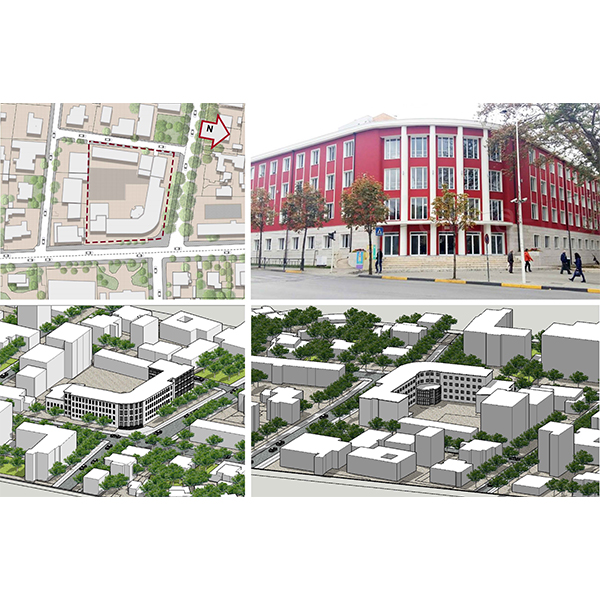
RESEARCH ARTICLE
Evaluation of the Visual Comfort and Daylight Performance of the
The daylight in classrooms is a crucial aspect that affects the quality of the learning environment and the overall performance of the students. Visual arts, such as painting, sculpture, carving, textile design and photography, require specific lighting conditions, which are different from the regular classroom standards.
Journal of Daylighting 10 (2023) 117-135
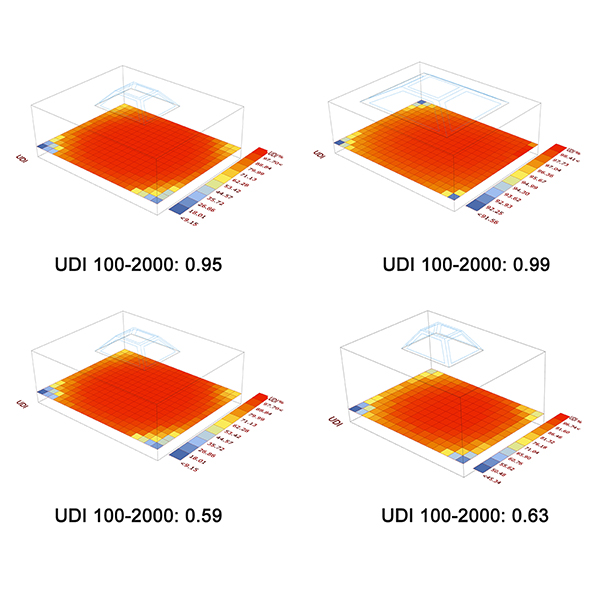
RESEARCH ARTICLE
Design Optimization of the Skylight for Daylighting and Energy Performance
In terms of sustainable design, lateral windows and skylights are important. Daylighting has become a vital component in office buildings because it increases occupants' productivity, well-being, and energy savings via windows and skylights.
Journal of Daylighting 10 (2023) 72-86

RESEARCH ARTICLE
The Architectural Design of Building Façade Models Related to
Lighting control integrated with daylighting is recognized as an important and useful strategy in energy efficient building design. One of the right factors to reduce energy consumption for artificial lighting during the day is the maximum utilization of sunlight.
Journal of Daylighting 10 (2023) 60-71

RESEARCH ARTICLE
Evaluation of Occupants’ Visual Perception in Day Lit Scenes: A
Daylight improves indoor environmental quality, the physical and mental health of occupants, and their efficiency. Research in the area of human-centric lighting that considers the visual and non-visual effects of light on human vision, have focused on examining human visual perception in response to a wide variety of lighting aspects.
Journal of Daylighting 10 (2023) 45-59

RESEARCH ARTICLE
Impact of Window Design on Dynamic Daylight Performance in an
Window design affects the building's appearance. Besides, it has a significant impact on daylight performance and the visual comfort of interior spaces.
Journal of Daylighting 10 (2023) 31-44

RESEARCH ARTICLE
Visual Comfort Assessment of Hospital Patient Rooms with Climate Responsive
As advanced technologies become prevalent, they are being used more widely in numerous fields. The building sector is not an exception. One of these cutting-edge technologies is responsive facades, which are used in buildings and have an undeniable effect on daylighting.
Journal of Daylighting 10 (2023) 17-30

RESEARCH ARTICLE
Biomimicry as an Approach to Improve Daylighting Performance in Office
Biomimicry inspired architects to solve complex design problems and develop adaptive solutions for enhancing the environmental quality. Fields of inspiration include energy efficiency, natural ventilation, daylighting, and structural stability.
Journal of Daylighting 10 (2023) 1-16
Journal Rank
Tracked for Impact Factor
CiteScoreTM 2024: 3.7
Rank 2024: Q2 (Energy)
Join our Editorial Board
Applications should be sent electronically at jd@solarlits.com.
Editorial Board

Dr Paola Sansoni
CNR-INO, Italy

Dr Fabio Peron
IUAV University of Venice, Italy

Dr Ferdinando Salata
University of Rome, Italy

Dr Umberto Berardi
Ryerson University, canada

Prof Laura Bellia
University of Naples Federico II, Italy

Prof. Önder Güler
Istanbul Technical University, Türkiye

Prof Francesco Asdrubali
University of Perugia, Italy

Prof. Nabil Elminshawy
Port Said University, Egypt

Prof. Yuehong Su
University of Nottingham, UK

Dr. Kacem Gairaa
center for renewable energy development, Algeria

Dr Canan Kandilli
Usak University, Turkey

Dr Boon Han Lim
Universiti Tunku Abdul Rahman, Malaysia

Dr Guiqiang Li
University of Science and Technology of China, China

Prof. Lambros T. Doulos
Hellenic Open University, Greece

Dr Arsenio Barbón
University of Oviedo, Spain

Dr Doris Abigail Chi Pool
Universidad de las Américas Puebla, Mexico

Dr. Francesca Fragliasso
University of Naples Federico II, Italy

Dr Seyed Morteza Hosseini
Aalborg University, Denmark

Dr Francesco Sommese
University of Naples Federico II, italy

Alp Tural
Virginia Tech, USA

Omid Nematollahi
Isfahan University of Technology, South Korea

Dr Vincenzo Costanzo
University of Catania, Italy

Dr Osama Mohamed Omar
University of Bahrain , Bahrain

Dr. Francesco Nocera
Department of Civil Engineering and Architecture, University of Catania (ITALY), Italy

Dr Mohammed Salah Mayhoub
Al-Azhar University, Egypt

Dr Hui Shen
Texas A&M University-Kingsville, USA

Wei Wang
Southeast University, 中国

Dr Ahmed A. Y. Freewan
Jordan University of Science and Technology, Jordan

Prof. BANU MANAV
Kadir Has University, Turkey

Dr Petar Pejic
University of Niš, Serbia
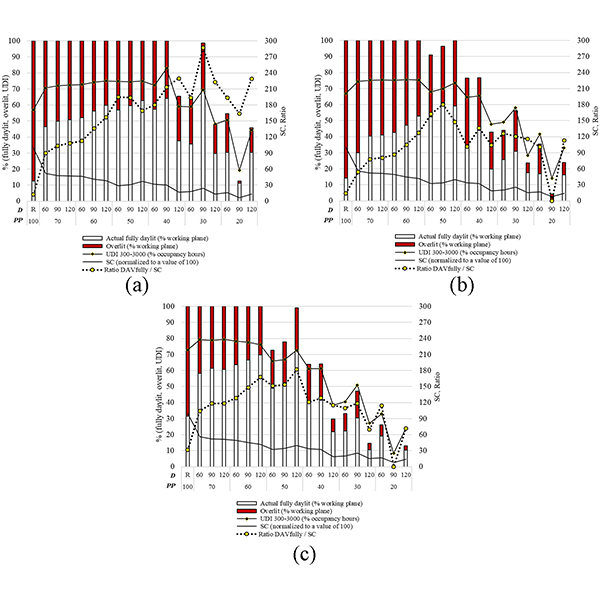
RESEARCH ARTICLE
A Comprehensive Evaluation of Perforated Façades for Daylighting and
New design tools have enabled architects to explore complex geometries for building envelopes. Perforated Screens (PS) have gained popularity but their design is still intuitive, often focused on aesthetic and morphological criteria.
Journal of Daylighting 6 (2019) 97-111
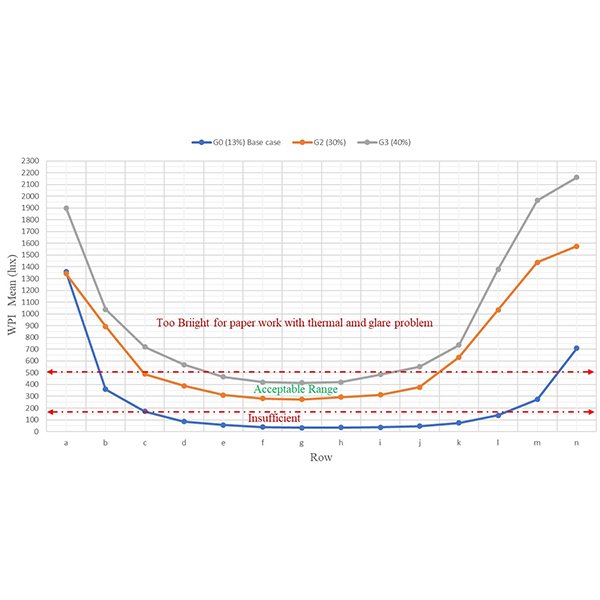
RESEARCH ARTICLE
Daylighting Evaluation and Optimisation of Window to Wall Ratio for
A base case model is a more potent dose for applied research; the passive architectural design for sustainability requires optimised experiments. However, experimenting with physical developments require construction and deconstruction until they achieved the optimal scenario.
Journal of Daylighting 8 (2021) 20-35
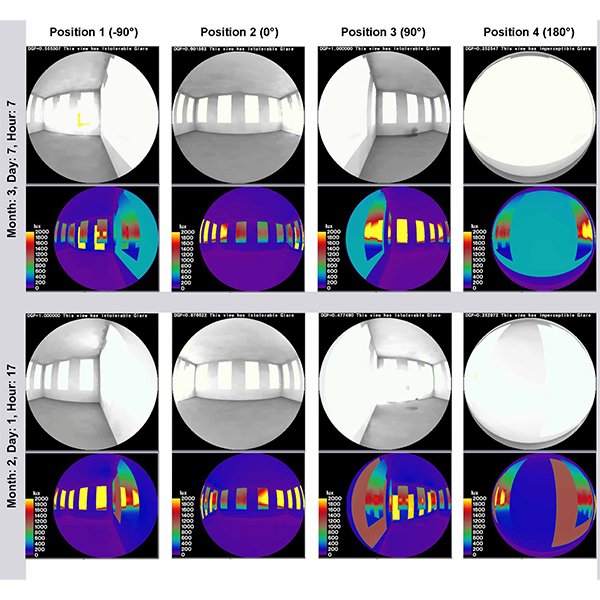
RESEARCH ARTICLE
Impact of Different Shading Devices on Daylight Performance and Visual
Daylighting has become an essential feature in libraries since it can boost productivity, well-being, and energy savings. It is crucial to prevent discomfort glare irritation while maintaining the quality of view, and daylight demands.
Journal of Daylighting 9 (2022) 97-116
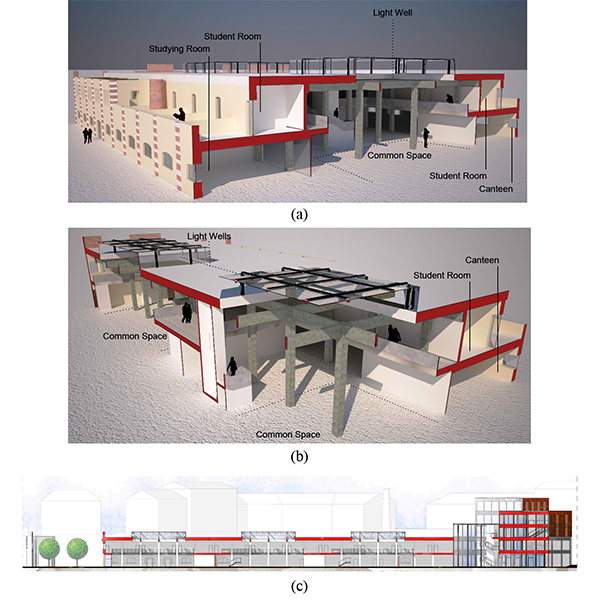
RESEARCH ARTICLE
Daylighting as the Driving Force of the Design Process: from
This paper presents a study for the transformation of an industrial area in Turin, Italy. The area hosts two buildings (one of which appointed as listed) to be transformed into dwellings.
Journal of Daylighting 1 (2014) 36-55
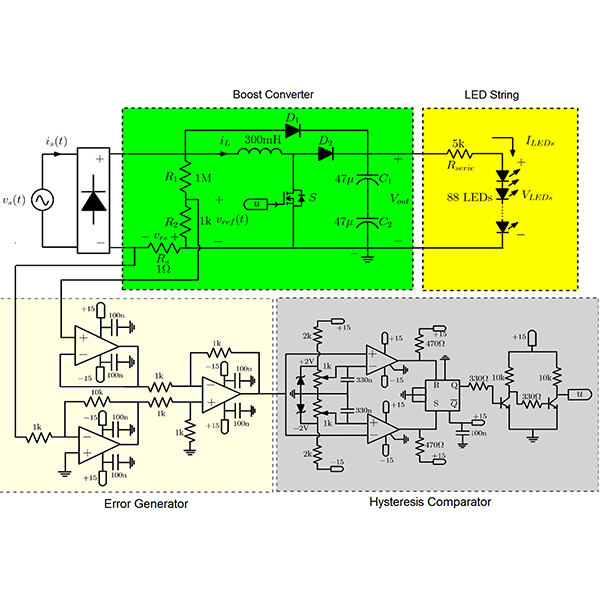
RESEARCH ARTICLE
Power Factor Correction of Compact Fluorescent and Tubular LED Lamps
Compact Fluorescent Lamps (CFLs) and Light-emitting Diode (LED) lamps have received wide acceptance in lighting applications during the last few years.
Journal of Daylighting 7 (2020) 73-83
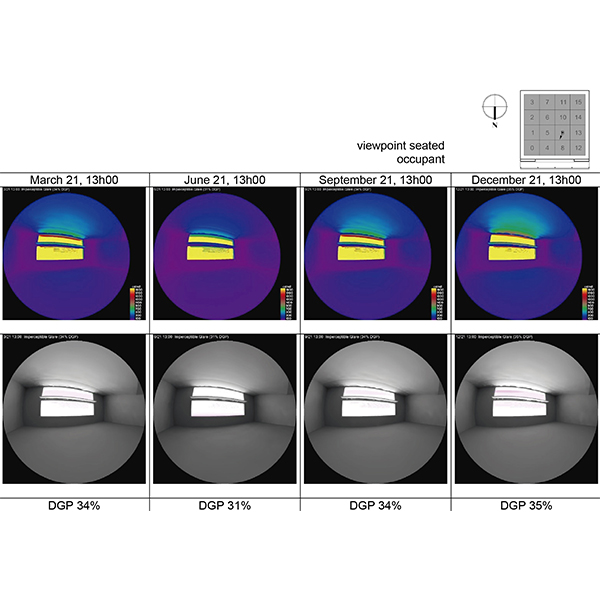
RESEARCH ARTICLE
Optimisation of Passive Solar Design Strategies in Side-lit Offices:
It has been shown that in buildings with fully glazed facades designed to save electricity and increase daylight, overheating due to excessive solar gains and glare have become recurrent problems, affecting the quality of the indoor environment in office buildings.
Journal of Daylighting 7 (2020) 107-121
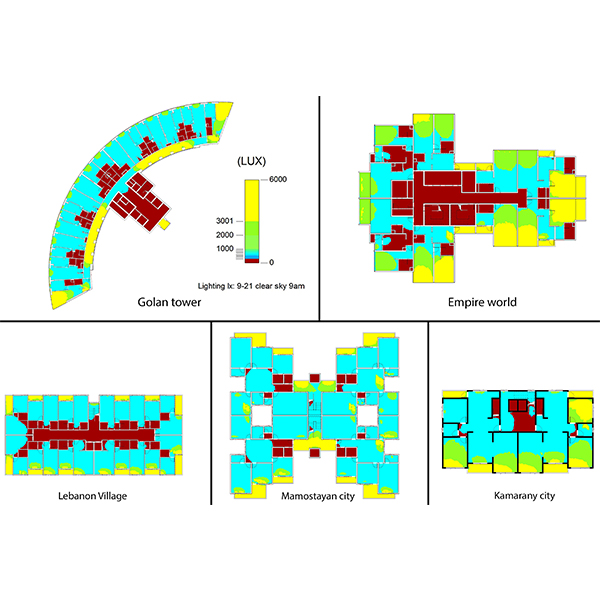
RESEARCH ARTICLE
Impact of Building Typology on Daylight Optimization Using Building Information
Daylight represents one of the crucial factors that affect directly on the building performance and its occupants. This study assesses the daylight performance in the multi-storey residential buildings (apartments) in Erbil city.
Journal of Daylighting 6 (2019) 187-201
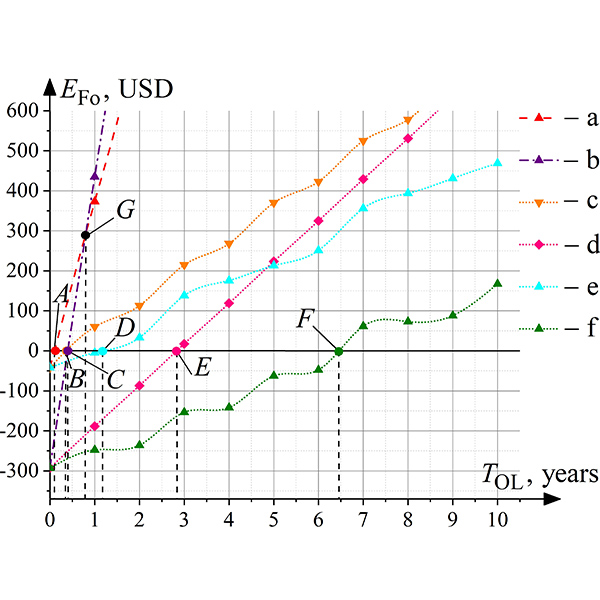
RESEARCH ARTICLE
Economic and Energy Efficiency of Artificial Lighting Control Systems for
The aim of the research is to determine the economic and energy efficiency usage of the artificial lighting control systems, with the help of astronomical relays and motion sensors, by various types of light sources for the stairwells (stair landings and staircases) of multistory residential buildings.
Journal of Daylighting 7 (2020) 93-106
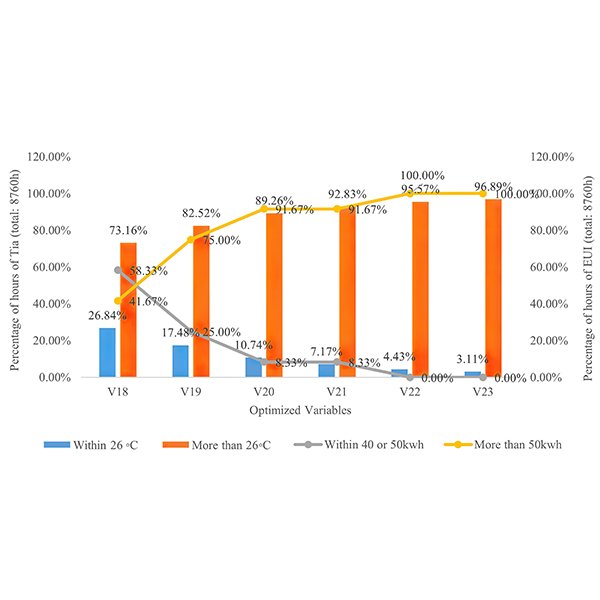
RESEARCH ARTICLE
An Investigation-Based Optimization Framework of Thermal Comfort Analysis in
Optimization becomes more valuable when the optimal variables decision can consider sensitivity analysis. To get optimum results quickly, this study established a synthetic sensitivity analysis and multi-objective optimization approach, which is combined with an energy simulation framework characterized by parallel processing.
Journal of Daylighting 9 (2022) 48-63
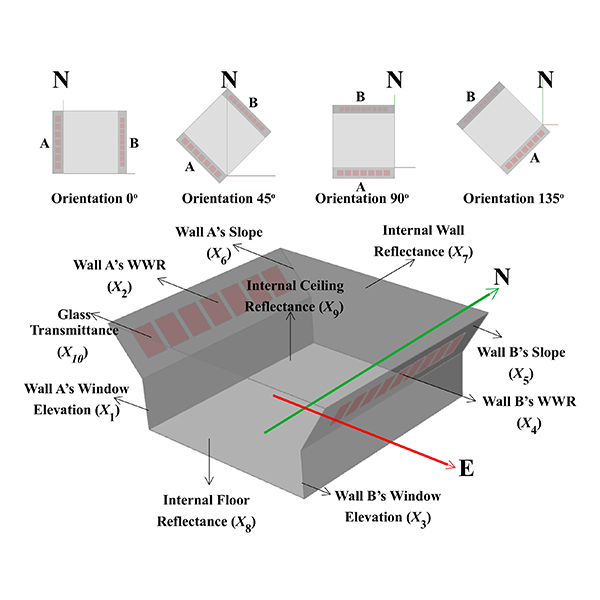
RESEARCH ARTICLE
Optimization of Daylighting Design Using Self-Shading Mechanism in Tropical
Despite its potential, daylighting strategies in school classrooms in the tropical climate regions is little explored in the literature. The use of two-sided or bilateral daylight opening, as well as the self-shading mechanism using sloped walls, are currently seen as potential strategies to achieve good daylighting in tropical buildings.
Journal of Daylighting 9 (2022) 117-136
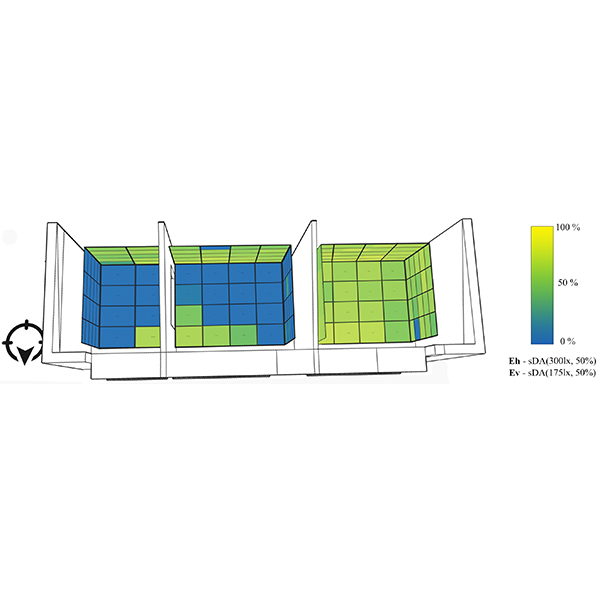
RESEARCH ARTICLE
Daylighting metrics: an approach to dynamic cubic illuminance
Advances in research work in the field of numerical analysis of daylight performance have generated in-depth knowledge on photometric measurements of daylight quality.
Journal of Daylighting 5 (2018) 34-42
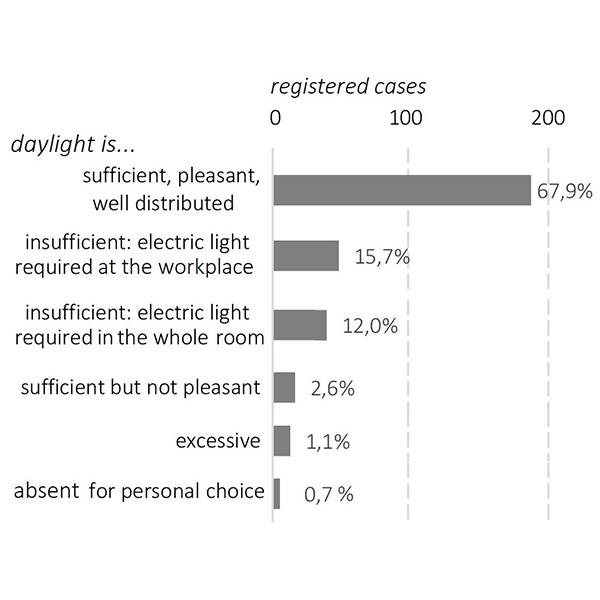
RESEARCH ARTICLE
Lighting Quality Self-assessment in Italian Home Offices
The spread of information technology and the improvement of telecommunicating systems have changed the way to conceive work. People performing typical office activities provided with a laptop and an internet connection can work in whatever place: a coffee house, a waiting room of a train station, an airport, or their own home.
Journal of Daylighting 9 (2022) 177-196
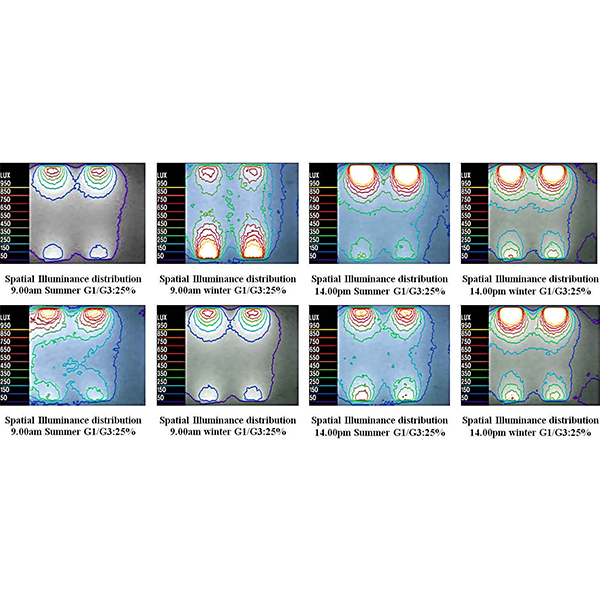
RESEARCH ARTICLE
Optimum Glazing Configurations for Visual Performance in Algerian Classrooms under
Daylight quality and quantity in Algerian schools show serious problems in ensuring visual comfort of students and teachers. Some problems are due to window design, which leads to excessive amount of sunlight penetration into the classrooms.
Journal of Daylighting 6 (2019) 11-22
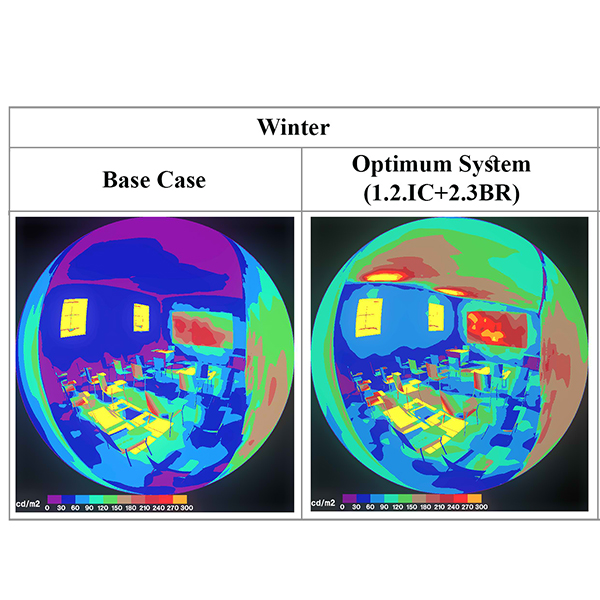
RESEARCH ARTICLE
Improving Daylight Availability in Heritage Buildings: A Case Study of
Refurbished heritage buildings usually lack in meeting the required standards defined for the new function especially when reused as educational buildings.
Journal of Daylighting 8 (2021) 120-133
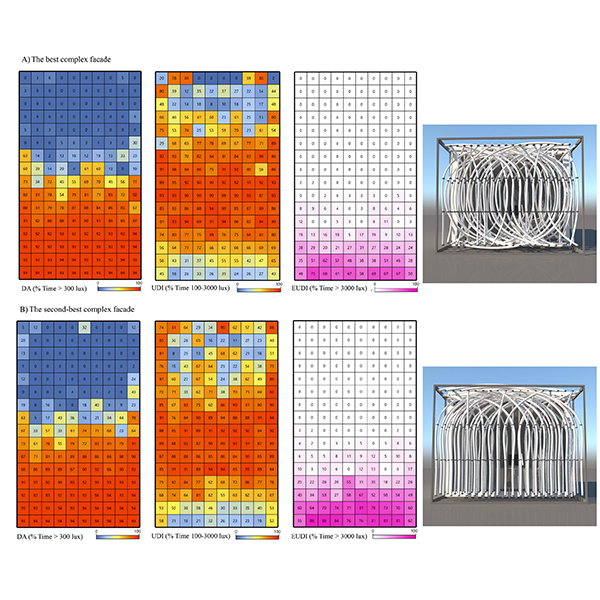
RESEARCH ARTICLE
Biomimetic Kinetic Shading Facade Inspired by Tree Morphology for Improving
Many recent studies in the field of the kinetic façade developed the grid-based modular forms through primary kinetic movements which are restricted in the simple shapes..
Journal of Daylighting 8 (2021) 65-85
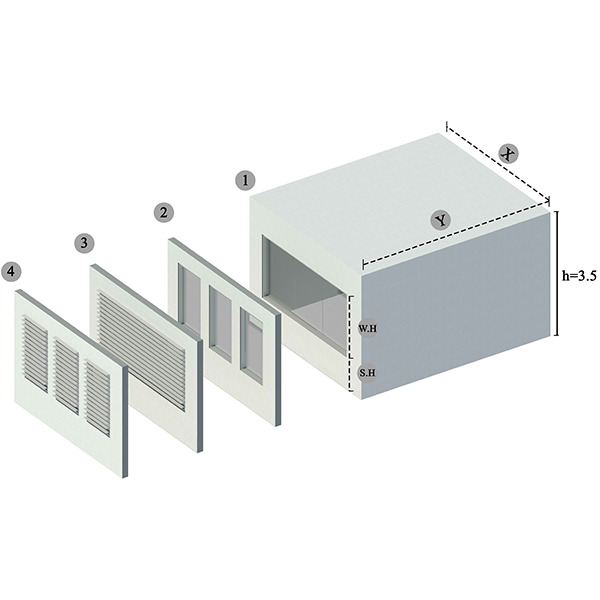
RESEARCH ARTICLE
Development of a Machine-Learning Framework for Overall Daylight and
Application of machine learning methods as an alternative for building simulation software has been progressive in recent years. This research is mainly focused on the assessment of machine learning algorithms in prediction of daylight and visual comfort metrics in the early design stages and providing a framework for the required analyses.
Journal of Daylighting 8 (2021) 270-283
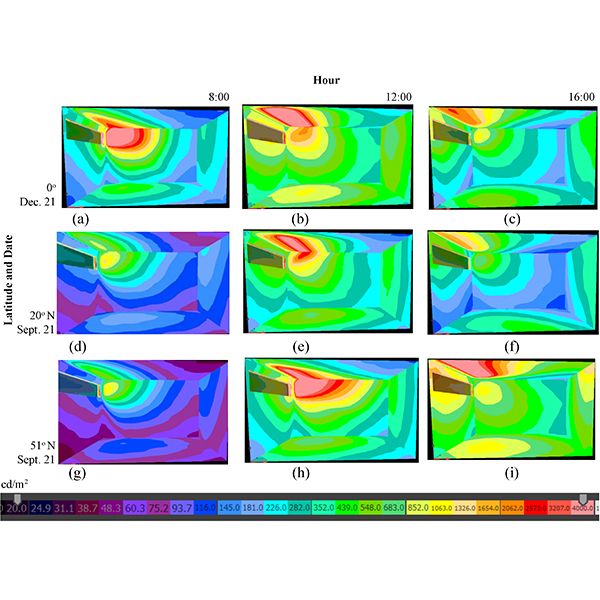
RESEARCH ARTICLE
Application of Micro-structured Sunlighting Systems in Different Climatic Zones
Two-sided micro-structures on windowpanes have been developed for redirecting sunlight into the depth of rooms in order to improve daylighting. In a joint research project comprehensive sunlighting-systems for windows are developed, integrating micro-structures in triple-glass units.
Journal of Daylighting 6 (2019) 52-59
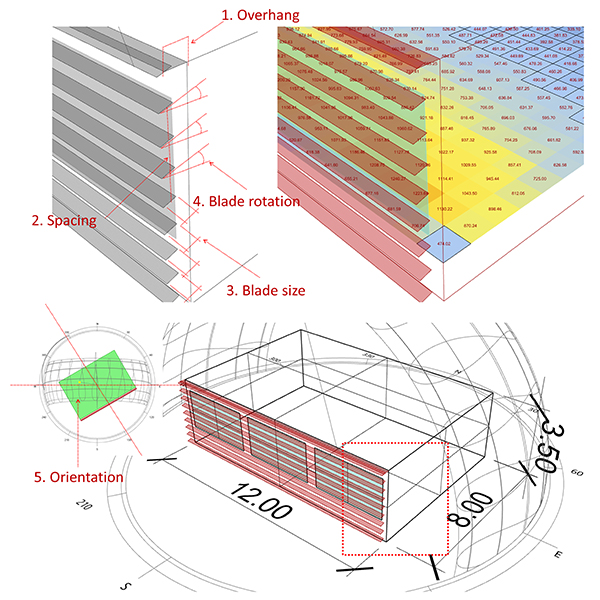
RESEARCH ARTICLE
The optimization of louvers shading devices and room orientation under
This paper presents parametric and multi-objective optimization (MOO) approach in optimizing daylight and energy consumption by incorporating louvres shading devices depicting three different sky conditions: Birmingham, UK, Jakarta, Indonesia, and Sydney, Australia.
Journal of Daylighting 9 (2022) 137-149
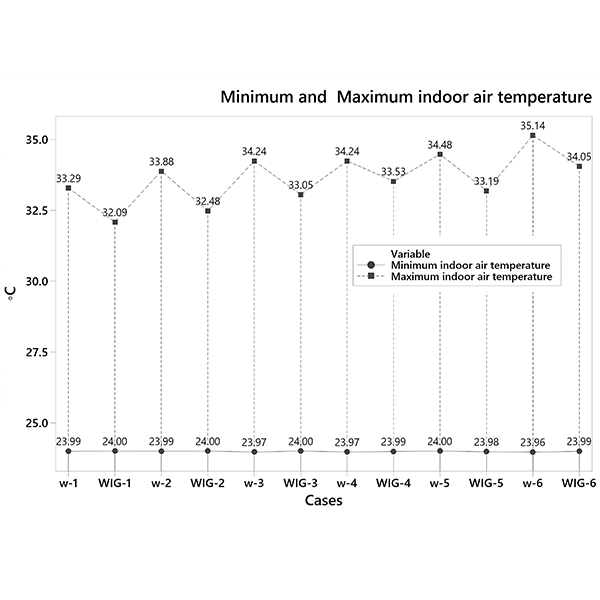
RESEARCH ARTICLE
Assessment of the Thermal Performance of Vertical Green Walls Using
Construction of multifunctional building envelopes using vertical greenery walls (VGW) has emerged as a sustainable green technology to improving cooling efficiency.
Journal of Daylighting 8 (2021) 294-312

RESEARCH ARTICLE
Maximizing the Performance of Laser Cut Panel by Interaction of
The interaction between different ceiling geometries with laser cut panels (LCPs) is investigated using real experiments and computer simulations to maximize the daylight performance of the LCP.
Journal of Daylighting 1 (2014) 29-35
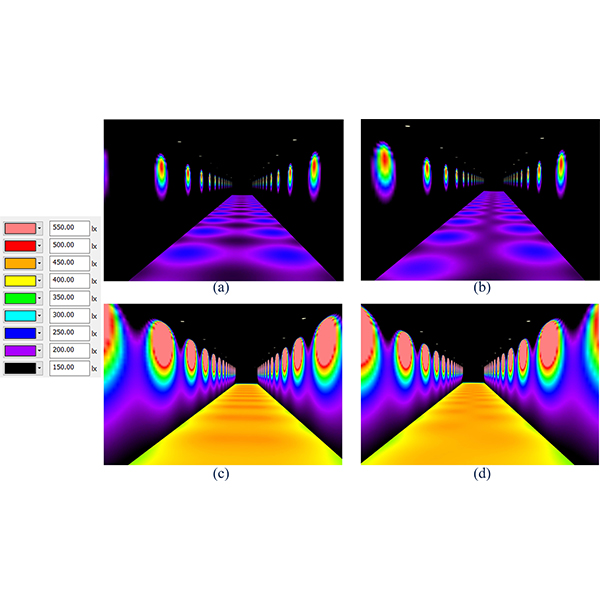
RESEARCH ARTICLE
Phasor Method to Estimate Illuminances Due to Parallel Arrays of
Direct horizontal illuminance along a calculation row due to two parallel arrays of large numbers of identical light sources behaves like a periodic signal with a sinusoidal pattern, which contains useful information for design purpose.
Journal of Daylighting 7 (2020) 246-257
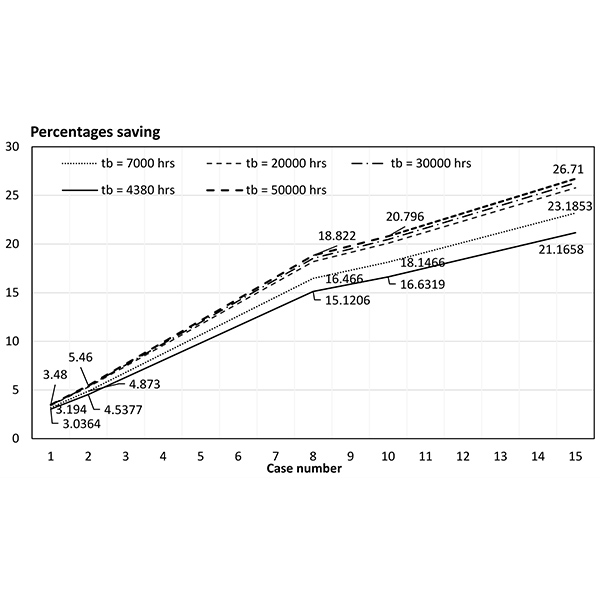
RESEARCH ARTICLE
A New Trend for Indoor Lighting Design Based on A
Most power system planners are interested in the savings of electrical power consumption. Various references demonstrate that the highest consumed power is by the lighting systems standing around 19% of worldwide energy consumption.
Journal of Daylighting 7 (2020) 137-153

RESEARCH ARTICLE
Development of Two-Step Biomimetic Design and Evaluation Framework for
Climate change, increase in CO2 production and energy consumption are major global issues and the building, environmental and construction sector is contributing to the increasing concern day by day.
Journal of Daylighting 9 (2022) 13-27
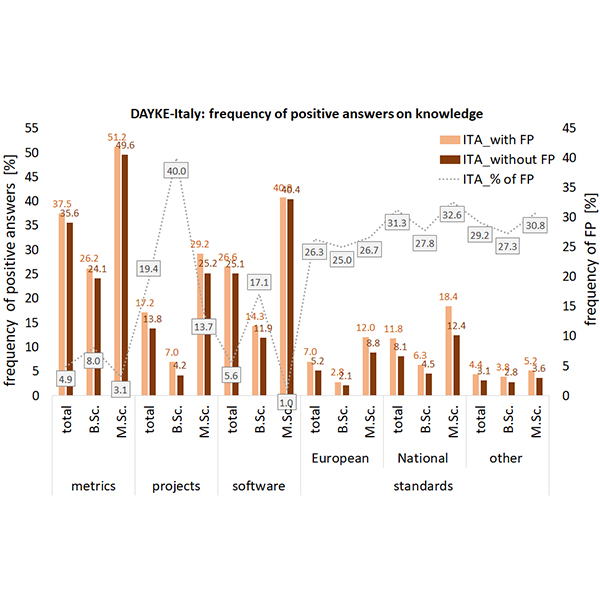
RESEARCH ARTICLE
A Survey on Daylighting Education in Italian Universities. Knowledge of
Daylighting is a strategic topic to achieve sustainable buildings, so it is more and more imperative that it is implemented in architecture curricula to prepare a new generation of daylighting-oriented practitioners.
Journal of Daylighting 8 (2021) 36-49
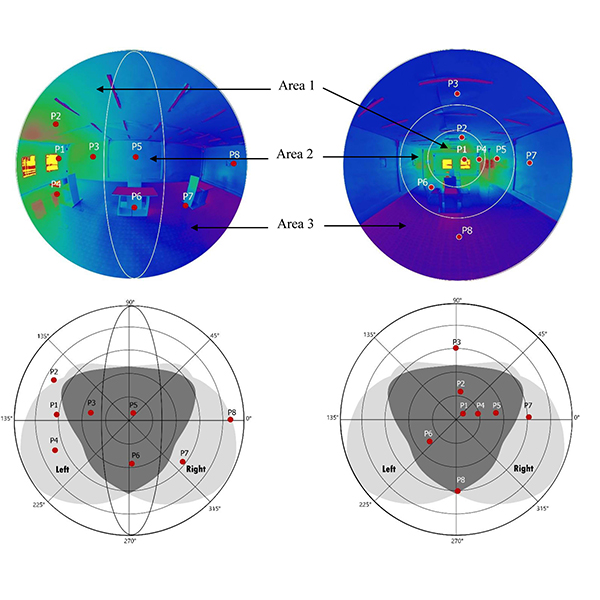
RESEARCH ARTICLE
A Combined Method for an Exhaustive Investigation of the Anidolic
Lighting quality in office environments is a broad concept that must be taken into account in the design stage to deliver comfortable spaces to reduce workers' stress.
Journal of Daylighting 8 (2021) 149-164
 HOME
HOME